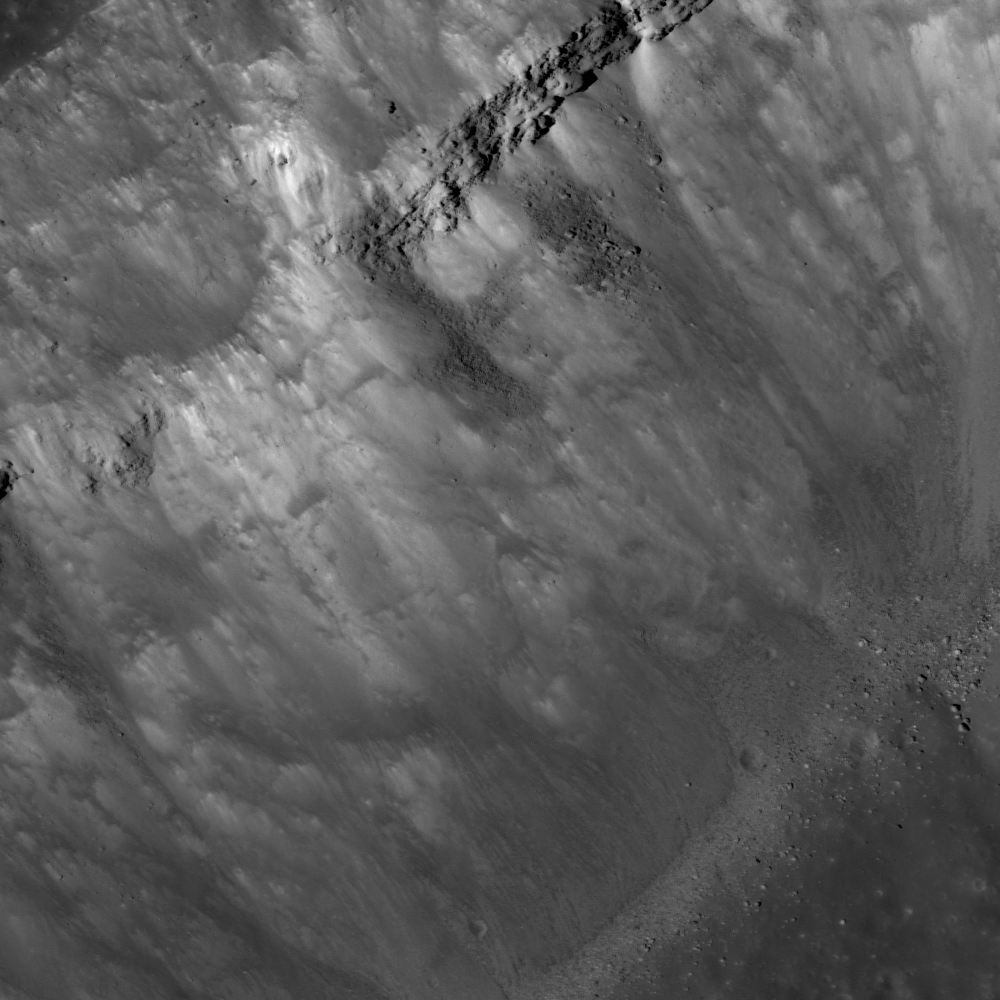
Landslides are primarily caused by gravity pulling loose material down a slope. Numerous factors contribute to landslides on Earth, including water and vegetation, but these can be ignored for the Moon. However, both bodies are affected by the angle of repose which is related to the cohesiveness of the material making up the slope. Once the angle of repose is exceeded the loose material on the slope slides downhill. Since the exposed bedrock layer near the top of the wall is more cohesive it stays intact while loose rocks and dust slide from underneath. As the wall material continues to slide down, more of the resistant layer will be exposed until it is undermined and is pulled down by gravity. The boulders at the base of the landslides are probably pieces of the bedrock layer.
Explore the rest of Kepler's rim in the NAC image!
Related Posts: Linné Crater
Published by Drew Enns on 10 November 2010